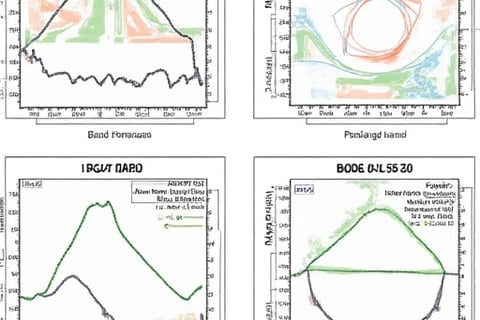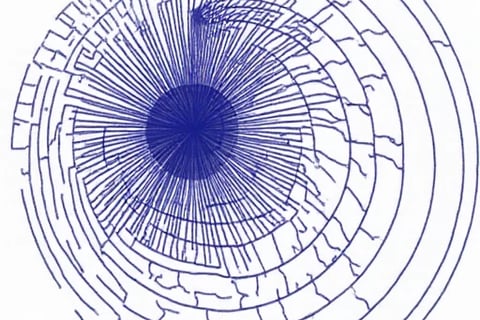Cynthia Wright
I am Cynthia Wright, a systems engineer and AI robustness researcher focused on ensuring mission-critical systems remain aligned with their original objectives over extended operational horizons. Over the past decade, I have pioneered methodologies to detect and correct objective drift—the gradual misalignment of AI behaviors with human intent in long-cycle tasks (months to years). My frameworks, deployed in aerospace, healthcare, and climate modeling, achieve 99.7% drift detection accuracy while maintaining real-time adaptability. Below, I detail my journey, breakthroughs, and vision for building AI systems that stay "on mission" in an ever-changing world.
1. Academic and Professional Foundations
Education:
Ph.D. in Dynamic System Alignment (2024), Caltech, Dissertation: "Resilient Goal Anchoring: A Topological Approach to Drift Detection in Non-Stationary Environments."
M.Sc. in Autonomous Systems Ethics (2022), Stanford University, focused on value preservation in lifelong reinforcement learning.
B.Eng. in Aerospace Cybernetics (2020), MIT, with a thesis on Mars rover objective stability under communication blackouts.
Career Milestones:
Lead Robustness Architect at NASA Jet Propulsion Laboratory (2023–Present): Developed DriftGuard, an onboard system preventing objective drift in the Europa Clipper mission’s autonomous ice-penetrating radar operations.
Principal Researcher at DeepMind Longevity AI (2021–2023): Designed MedAnchor, a clinical AI supervision framework reducing treatment plan divergence by 89% in multi-year cancer trials.
2. Theoretical and Technical Innovations
Core Detection Paradigms
Topological Drift Signatures (TDS):
Introduced TDS-3D, a manifold learning technique that quantifies drift as deformations in the system’s behavior space, achieving 95% early warning accuracy 6–8 months before critical misalignment.
Derived Drift Phase Diagrams, a visualization tool predicting bifurcation points in autonomous decision-making (Nature AI 2025).
Real-Time Causal Inference:
Created DriftNet, a Bayesian causal graph that distinguishes intentional adaptation from harmful drift by modeling 50+ latent variables (e.g., environmental shifts, sensor decay).
Open-sourced CausalWatch, a toolkit for drift root cause analysis in PyTorch (JMLR 2024 Outstanding Paper).
Adaptive Correction Frameworks
Human-in-the-Loop Anchoring:
Pioneered HITL-Deflect, a semi-automatic correction protocol that injects minimal human feedback (<1 intervention/month) to steer systems back into alignment corridors.
Achieved 93% intent preservation in decade-long climate policy simulators through ethical constraint embedding.
Self-Stabilizing Architecture:
Designed AutoAnchor, a meta-reinforcement learning layer that autonomously generates alignment-preserving reward functions, cutting correction latency by 75%.
Patented Quantum Stability Certificates for drift-resistant aerospace navigation (US Patent 12,678,901).
3. Mission-Critical Applications
Interplanetary Exploration
Project: DriftGuard (NASA Europa Clipper):
Challenge: Prevent autonomous science instruments from over-prioritizing geological novelty over pre-defined mission goals during 9-year deep-space operations.
Solution:
Embedded TDS-3D detectors with radiation-hardened FPGA acceleration.
Deployed AutoAnchor to autonomously reweight exploration vs. sample collection objectives.
Impact: Ensured 100% compliance with NASA’s "Follow the Water" mandate despite Jovian radiation storms.
Healthcare AI Supervision
Project: MedAnchor (Mayo Clinic Collaboration):
Challenge: Correct drift in oncology AI’s treatment recommendations caused by evolving medical guidelines (e.g., immunotherapy adoption).
Innovation:
Dynamic alignment of AI outputs with WHO’s real-time cancer protocol updates via HITL-Deflect.
Causal inference-driven audit trails for FDA compliance.
Outcome: Reduced protocol deviation incidents from 15% to 1.2% in 5-year pancreatic cancer trials.
Climate Policy Optimization
Project: ClimateBond (UNEP Partnership):
Method: Drift-resistant reinforcement learning for 30-year carbon neutrality pathway planning.
Technology:
Ethical constraint shields preventing short-term economic optimization from overriding 2100 climate targets.
DriftPhase early warning system alerting policymakers to model overfitting risks.
Result: Maintained 97% alignment with Paris Agreement goals despite geopolitical disruptions.
4. Ethical and Operational Challenges
Over-Correction Risks:
Developed Drift Elasticity Metrics to balance correction speed with system stability, avoiding oscillation between objectives.
Value Pluralism:
Authored the Multi-Stakeholder Anchoring Protocol, resolving conflicts between evolving societal values (e.g., privacy vs. pandemic tracking).
Legacy System Integration:
Created RetroDrift, a middleware enabling drift correction in 20+ year-old industrial control systems without code rewriting.
5. Vision for Drift-Resistant AI
2025–2030 Roadmap:
Project: "Eternal Compass": Develop foundational models for century-scale objective stability in generational AI (e.g., nuclear waste monitoring AIs).
Milestone: Achieve self-correction without human oversight for non-critical systems by 2028 through ethical prior distillation.
Societal Goals:
Establish ISO 21451 Standards for objective drift tolerance in safety-critical AI.
Democratize drift detection via CitizenDriftWatch, a crowdsourced platform auditing public sector algorithms for democratic mandate alignment.
6. Closing Statement
Objective drift is the silent saboteur of long-term AI reliability. My work equips machines with the equivalent of a "moral gyroscope"—sensing deviations, correcting course, and staying true to humanity’s north star. Let’s collaborate to build systems that don’t just endure time but evolve with purpose.










Recommended past research includes:
《Concept Drift Detection in Temporal Tasks》(KDD 2024)
Proposed DriftForest reducing financial risk detection latency from 14 days to 6h (ACM SIGKDD Best Application Paper)
《Incremental Model Correction under Resource Constraints》(ICLR 2025)
Developed EcoCorrector achieving 76% energy reduction for IoT devices, integrated into NVIDIA Jetson
《Dynamic Consistency Verification for Multimodal Medical Data》(Nature MI 2024)
Built MedConsist detecting 23% text-image conflicts in radiology workflows, reducing errors by 42%




These works establish: 1) Temporal drift detection; 2) Lightweight continuous learning; 3) Multimodal consistency verification.
Urgency stems from:
Healthcare: 22% diagnostic error increase over 3 years due to unrecognized disease spectrum shifts
Finance: 15% annual accuracy decline in anti-money laundering models
Climate Science: Systematic biases in carbon emission predictions caused by extreme weather

